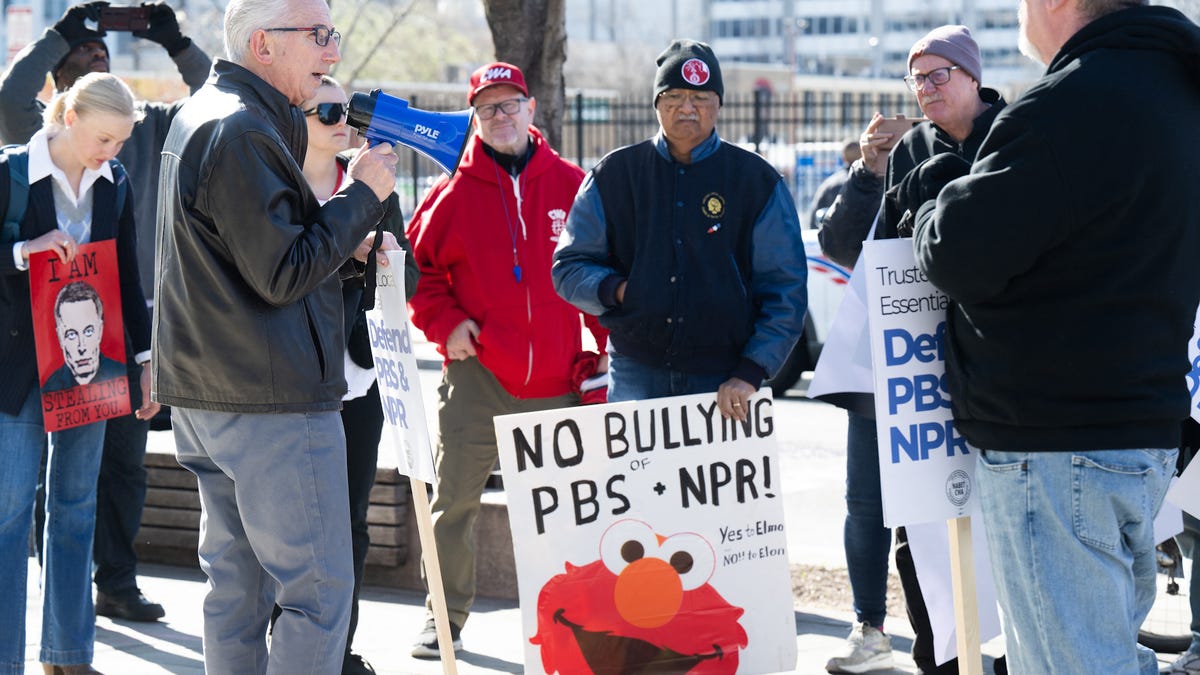‘We will vigorously defend our right to provide essential news, information and life-saving services to the American public,’ Katherine Maher, NPR’s president and CEO, said.
President Donald Trump signs order to cut PBS and NPR funding
President Donald Trump signed an executive order to stop directly funding PBS and NPR.
President Donald Trump on May 1 signed an executive order to pull federal funding from the Corporation for Public Broadcasting, imperiling America’s largest public broadcasters and hundreds of associated local and regional radio and television channels.
Trump’s decision makes good on weeks of threats from administration officials and Republican lawmakers toward the public media outlets, accusing them of biased reporting.
The order instructs the Corporation for Public Broadcasting (CPB) Board of Directors and all executive departments and agencies to cease direct federal funding for NPR and PBS “to the maximum extent allowed by law” and to “decline to provide future funding.” However, the corporation is not a federal agency subject to such directives, putting the efficacy of the order into doubt.
The existing board of directors filed a lawsuit against the Trump administration on Tuesday, April 29, after the president attempted to remove three of the five board members.
Patricia Harrison, president and CEO of CPB, released a statement Friday, May 2, criticizing the decision and referring to protections afforded by Congress when it was established over 55 years ago.
“CPB is not a federal executive agency subject to the President’s authority,” Harrison said. “Congress directly authorized and funded CPB to be a private nonprofit corporation wholly independent of the federal government.”
What is the Corporation for Public Broadcasting?
The Corporation for Public Broadcasting is a private, nonprofit corporation authorized by Congress in 1967 by the Public Broadcasting Act.
It was established to “encourage the growth and development of public radio and television broadcasting,” asserting public media services are “valuable local community resources” for addressing national concerns and solving local problems, according to the Act.
CPB does not produce programming and does not own, operate or control any public broadcasting stations. It helps support the operations of more than 1,500 locally managed and operated public television and radio stations nationwide, its website says, making it the nation’s largest source of funding for research, technology and program development for public radio, television and related online services.
Can you still tune in to PBS and NPR?
Each news organization and their partner stations remain fully operational as of Friday, May 2, and leaders of CPB are preparing to challenge the order.
Paula Kerger, president and CEO of PBS, called the executive order “blatantly unlawful” in a statement on May 2 and said the organization is “currently exploring all options to allow PBS to continue to serve our member stations and all Americans.”
Katherine Maher, NPR’s president and CEO, defended the outlet’s journalism and reiterated its commitment to editorial independence in the wake of allegations of bias by the Trump administration.
“We will vigorously defend our right to provide essential news, information and life-saving services to the American public,” she said. “We will challenge this Executive Order using all means available. “
Both NPR and PBS have previously said that Trump’s effort to cut their funding would disrupt essential media services and have a “devastating impact” on Americans who rely on them for credible local and national news, including during emergencies.
How much money do NPR and PBS receive from the government?
The CPB received $525 million in federal funding in 2024. More than 70% of those dollars goes directly to local NPR and PBS stations in the form of Community Service Grants, according to a CPB fact sheet. The majority of funds go to local tv and radio stations, with nearly all content free for anyone to access.
NPR receives about 1% of its funding directly from the federal government, according to the outlet.
The top 20 most popular NPR-affiliated public radio stations had on average eight million weekly listeners in 2022, Pew Research data shows. PBS reaches 58% of all U.S. television households annually, they report, with more than 130 million people watching on TV. More than 16 million people tune in to PBS’ website and apps each month, and another 53 million watch PBS on its Digital Studios platform and on YouTube.
Trump administration’s threats against US media
This is just the latest assault on media institutions by the Trump administration, preceded by attempts to block the Associated Press from the Oval Office over the president’s renaming of the Gulf of Mexico, suing Paramount over a “60 Minutes” interview and a March 14 executive order attempting to dismantle news outlet Voice of America.
The Federal Communications Commission is mounting assorted investigations against CBS, ABC, NBC, NPR, and PBS, according to the Committee to Protect Journalists, raising concerns they are politically motivated.
The Trump administration has labeled multiple institutions in academia and the media industry — from Harvard and Columbia universities to NPR and PBS — as being leftist, Marxist, biased, and woke, and threatened funding cuts. Human rights advocates have raised concerns over free speech and academic freedom.
“After a century of gradual expansion of press rights in the United States, the country is experiencing its first significant and prolonged decline in press freedom in modern history,” says media watchdog group Reporters Without Borders. “Donald Trump’s return to the presidency is greatly exacerbating the situation.”
Contributing: Reuters
Kathryn Palmer is a trending news reporter for USA TODAY. You can reach her at [email protected] and on X @KathrynPlmr.
